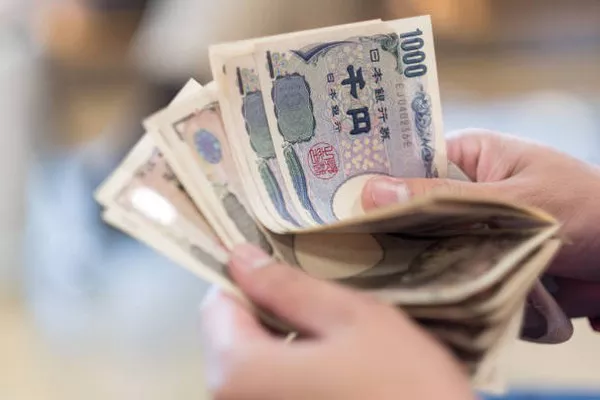In recent months, the Japanese yen has experienced a significant decline, reaching lows not seen in over a decade. This sharp depreciation has sparked concerns among investors, economists, and policymakers alike, prompting a closer examination of the factors driving this downward trend. In this comprehensive analysis, we delve into the underlying reasons behind the yen’s fall to shed light on this complex phenomenon.
Understanding the Current Landscape
Before delving into the specific factors influencing the yen’s depreciation, it is essential to grasp the broader economic landscape in which this currency movement is occurring. Japan, as one of the world’s largest economies, plays a pivotal role in global trade and finance. The yen, as the country’s official currency, holds significant sway in international markets and is closely monitored by investors and policymakers worldwide.
In recent years, Japan has grappled with a myriad of economic challenges, including sluggish growth, deflationary pressures, and an aging population. These structural issues have contributed to a prolonged period of economic stagnation, characterized by tepid consumer spending, subdued inflation, and lackluster business investment.
Moreover, Japan’s economic fortunes have been further complicated by external factors, such as geopolitical tensions, trade disputes, and the ongoing COVID-19 pandemic. These external headwinds have added another layer of uncertainty to the country’s economic outlook, exacerbating existing vulnerabilities and dampening investor sentiment.
Factors Driving the Yen’s Depreciation
Against this backdrop of economic uncertainty and volatility, several key factors have emerged as drivers of the yen’s recent depreciation. These factors, which range from domestic policies to global market dynamics, collectively contribute to the downward pressure on the Japanese currency. Let’s explore some of the most salient factors shaping the yen’s trajectory:
Monetary Policy: The Bank of Japan (BOJ), Japan’s central bank, has implemented an ultra-loose monetary policy aimed at stimulating economic growth and combating deflation. As part of its policy toolkit, the BOJ has engaged in aggressive quantitative easing measures, including large-scale asset purchases and negative interest rates. These accommodative policies have effectively lowered borrowing costs and increased liquidity in financial markets, but they have also exerted downward pressure on the yen.
Fiscal Stimulus: In response to the economic fallout from the COVID-19 pandemic, the Japanese government has rolled out substantial fiscal stimulus measures to support businesses and households. These stimulus packages, which include cash handouts, loan guarantees, and infrastructure spending, have bolstered economic activity in the short term but have also raised concerns about Japan’s mounting public debt. The influx of government spending has contributed to an expansionary fiscal stance, further weighing on the yen’s value.
Global Economic Trends: The yen’s depreciation is also influenced by broader trends in the global economy, including shifts in risk sentiment, interest rate differentials, and trade dynamics. In recent months, the yen has weakened against the US dollar and other major currencies amid rising risk appetite and expectations of faster economic growth outside Japan. Additionally, diverging monetary policies between the BOJ and other central banks, such as the Federal Reserve, have contributed to interest rate differentials that favor the US dollar, putting further downward pressure on the yen.
Trade Dynamics: Japan’s trade balance plays a crucial role in determining the value of the yen. As an export-oriented economy, Japan relies heavily on external demand for its goods and services. Changes in trade dynamics, such as fluctuations in export volumes, import prices, and currency exchange rates, can impact the yen’s value. In recent years, Japan has faced challenges from a stronger yen, which has made its exports less competitive in global markets. The yen’s recent depreciation may reflect efforts to enhance export competitiveness and support economic growth.
Market Sentiment and Speculation: Finally, market sentiment and speculative activity can also influence the yen’s exchange rate. Investor perceptions of Japan’s economic prospects, political stability, and policy effectiveness can affect demand for the yen and drive currency movements. Additionally, speculative trading in the foreign exchange market, driven by technical factors, algorithmic trading, and macroeconomic trends, can amplify fluctuations in the yen’s value.
Implications and Outlook
The yen’s recent depreciation has significant implications for Japan’s economy, financial markets, and global trade dynamics. While a weaker yen can benefit export-oriented industries and support economic growth, it also poses challenges, such as higher import costs, inflationary pressures, and financial market volatility.
Looking ahead, the trajectory of the yen will depend on a multitude of factors, including the evolution of Japan’s economic recovery, the effectiveness of monetary and fiscal policies, geopolitical developments, and shifts in global market sentiment. As policymakers navigate these uncertainties, they must strike a delicate balance between supporting economic growth, maintaining price stability, and safeguarding financial stability.
In conclusion, the yen’s fall to a decade’s low reflects a confluence of domestic and global factors shaping Japan’s economic landscape. By understanding the underlying drivers of this currency movement, policymakers, investors, and market participants can better navigate the challenges and opportunities presented by Japan’s evolving economic environment.


